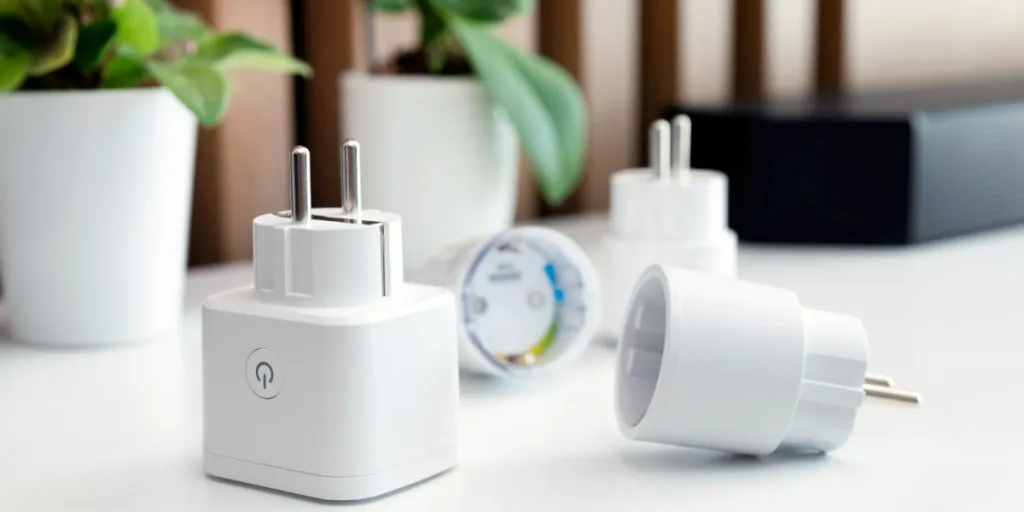As technology continues to reshape modern living, the demand for smart solutions that enhance convenience, efficiency, and security within homes is on the rise. Here we’ll delve into home automation on a budget, offering valuable insights and strategies to help your business introduce and market affordable smart devices.
Home automation isn’t just a luxury for the tech-savvy; it’s becoming a necessity for everyday households. As families seek ways to simplify their routines and save on energy costs, the demand for budget-friendly smart solutions is booming. We will guide you through the essential aspects of offering cost-effective home automation products that cater to diverse needs and preferences.
From smart lighting and thermostats to security systems and entertainment devices, we’ll explore how to bring smart living within reach for a broader audience.
Table of Contents
Understanding home automation basics
Overview of the global home automation market
Budget-friendly smart home hubs
Wallet-friendly smart lighting solutions
Affordable smart thermostats for energy savings
Inexpensive smart security systems
Low-cost smart plugs and power strips
Affordable smart home entertainment
Future-proofing your affordable smart home
Conclusion
Understanding home automation basics
Home automation involves using technology to remotely control and manage various devices and systems within a house. This is typically done through a central hub or smartphone app. Home automation allows you to automate tasks, monitor and control devices, and create smart routines for improved convenience and efficiency.
Common smart devices include lighting, thermostats, security systems, and entertainment devices. The ability to control these devices remotely and create automated routines enhances overall living quality and efficiency.
Overview of the global home automation market
The global market for smart home automation attained a valuation of approximately US $64.66 billion in 2022 and is projected to witness substantial expansion at a compound annual growth rate (CAGR) of about 27.3% between 2023 and 2030.
Among the key components, the hardware sector held the highest market share in 2022 and is anticipated to maintain its dominance through 2030. This growth is primarily attributed to the escalating demand for home automation hardware encompassing lighting control, security and access control, smoke detectors, and other related devices.
In the context of the forecast period from 2023 to 2030, the smart kitchen domain is forecasted to exhibit the most noteworthy CAGR. This projection is propelled by the proliferation of automated kitchen products, which offer convenient solutions for cooking tasks. A notable example is General Electric Company’s unveiling of the Profile smart mixer in January 2023, boasting integrated voice assistant support and connectivity features.
Furthermore, the launch of innovative smart refrigerators, like LG Electronics’ MoodUP refrigerator announced in the same month, has significantly contributed to the growth of this segment. These smart refrigerators feature LED panels, Wi-Fi and Bluetooth connectivity, and a suite of other intelligent functionalities.
Security and access emerged as the leader in generating market revenue during 2022 and is anticipated to maintain its dominant position until 2030.
The home automation market is changing quickly, so businesses must pay close attention to the changes to ensure the products they sell stay relevant.
Budget-friendly smart home hubs

When choosing a budget-friendly smart home hub, it’s important to consider features and functionalities that will offer the most value for your investment. Here are some key factors to keep in mind:
- Device compatibility: Ensure the hub supports many smart devices and brands. Compatibility is crucial for seamless integration and control over various devices in your smart home ecosystem.
- Wireless connectivity: Look for a hub with strong and reliable wireless connectivity options; this ensures that your hub can communicate effectively with your smart devices.
- Voice assistant integration: Many smart hubs have built-in support for popular voice assistants like Amazon Alexa, Google Assistant, or Apple Siri; this enables control of devices using voice commands.
- Automation and scenes: The hub should allow you to create customized automation routines and scenes. This means you can set up specific actions to occur automatically when certain conditions are met, such as turning off lights and locking doors when you leave the house.
- User-friendly interface: Opt for a hub with an intuitive and user-friendly interface, whether a smartphone app or a web-based dashboard.
- Remote access: Ensure that the hub offers remote access, allowing control of smart devices from anywhere using a mobile app or a web browser.
- Expandability: Consider the hub’s potential for expansion. As a person’s smart home evolves, they might want to add more devices. A hub that can accommodate additional devices and functionalities in the future will save them from having to replace it down the line.
- Local processing: Some hubs rely on cloud services for processing commands, while others can perform tasks locally. Local processing can be faster and more reliable, especially when the internet connection is down.
- Energy efficiency: Since the hub will likely run 24/7, consider its energy consumption and efficiency to minimize its impact on the electricity bill and the environment.
Remember that while the budget is important, a smart home hub is central to a person’s automation setup. Investing more in a reliable and capable hub can pay off in terms of long-term performance and compatibility.
Wallet-friendly smart lighting solutions
Smart lighting is a fantastic way to introduce the convenience and efficiency of smart home technology without breaking the bank. Here are some budget-friendly options to carry to appeal to a broad consumer base:
- Smart bulbs: Smart LED bulbs are a simple and affordable choice. They can be controlled using smartphone apps and often offer features like dimming and scheduling.
- Smart light strips: These flexible strips can be used for ambient lighting and creative setups. They are affordable and can be easily adhered to various surfaces.
- Smart plugs with regular bulbs: Convert regular bulbs into smart lights using smart plugs. These plugs are controlled remotely and are economical to make any light smart.
- Wireless smart switches: These switches can replace traditional ones and offer wireless control of lights.
- Smart motion sensors: Motion sensors can be paired with smart bulbs to automate lighting based on movement.
- Hub-free options: Many smart lights don’t require a dedicated hub and connect directly to Wi-Fi, reducing the overall setup cost.
- White-only smart bulbs: For people who don’t need color-changing options, ensure to carry white-only smart bulbs.
Benefits of LED bulbs and smart lighting controls
LED bulbs and smart lighting controls offer numerous benefits, from energy savings to convenience and customization.
Benefits of LED bulbs:
- Energy efficiency: LED bulbs use less electricity than traditional bulbs, resulting in lower energy bills and reduced environmental impact.
- Long lifespan: They last much longer, reducing replacements and waste.
- Durability: Resistant to vibrations and impact, suitable for various uses.
- Cooler operation: Emitting little heat, they are safer and more efficient.
- Instant on: Immediate illumination for quick lighting needs.
- Color options: LED tech allows varied colors for different moods.
- Dimmability: Many LED bulbs are dimmable, offering customizable brightness. Compatibility with dimmer switches is crucial.
Benefits of smart lighting controls:
- Remote control: Remotely manage lights via smartphone apps, even when away from home.
- Convenience: Establish schedules and automation for gradual morning illumination or auto-off upon departure.
- Energy savings: Optimize energy use by turning off unnecessary lights. Motion sensors activate when someone enters a room and deactivate when empty.
- Integration with smart assistants: Seamlessly connect with voice assistants like Alexa, Google Assistant, and HomeKit, enabling voice-controlled lighting.
- Security: Control lights remotely while away to simulate occupancy, enhancing home security.
- Scenes: Create preset lighting scenes where multiple lights adjust together.
Combining LED technology with smart controls can significantly enhance your home lighting experience.
Affordable smart thermostats for energy savings
Smart thermostats are advanced gadgets for controlling your home’s temperature. They connect to your Wi-Fi and can be controlled from your phone or other smart devices. Smart thermostats significantly reduce energy consumption by enabling precise control, programmable schedules, remote access, and learning algorithms.
Their advanced features, adaptable nature, and integration capabilities make them powerful tools for optimizing home energy use.
When considering which smart thermostats to carry for consumers looking for affordable home automation solutions, you want to keep energy efficiency top of mind. While smart thermostats can be convenient, for most people the goal is to save money on their energy bill.
So, ensure to carry more affordable smart thermostats that have energy-saving features like scheduling. More advanced smart thermostats may have advanced learning algorithms or advanced sensors that measure occupancy or room temperature, while these are nice to have, they may not be as necessary.
Learn more about the energy-saving capabilities of smart thermostats and which are the best to add to your inventory.
Inexpensive smart security systems
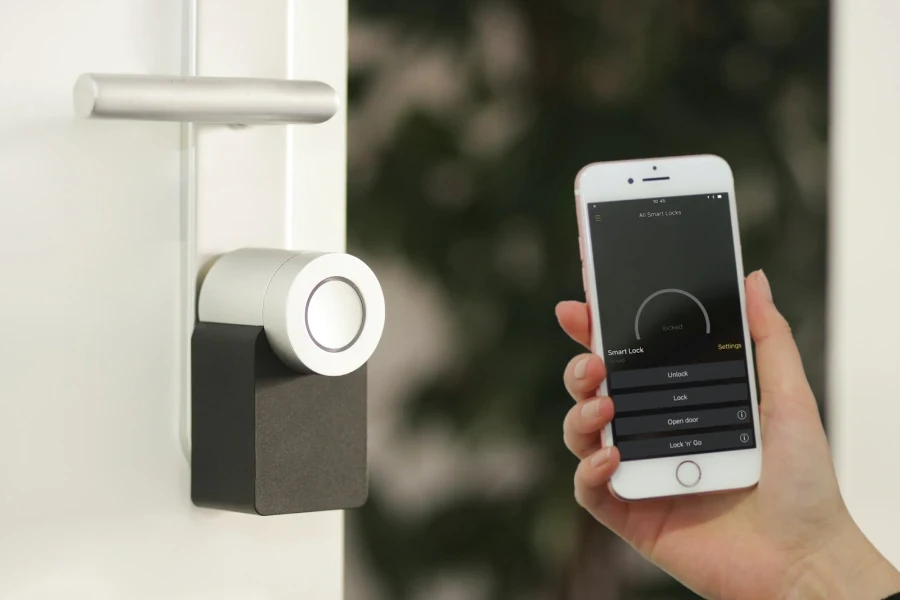
When it comes to bolstering home security without breaking the bank, a wide array of affordable smart security cameras and doorbells offer impressive features and peace of mind. Here’s a glimpse into the world of budget-friendly options:
Affordable smart security cameras
- Wyze Cam: Known for its affordability and reliability, it offers live streaming, motion detection, and cloud storage options at an accessible price point.
- Blink Mini: Compact and cost-effective, the Blink Mini delivers motion detection and two-way audio, and it can be integrated into larger Blink security systems.
- YI Indoor Camera: YI’s indoor camera provides crisp video quality, motion detection, and cloud storage capabilities at an attractive price.
Budget-friendly smart doorbells
- Tuya Video Doorbell: Works with Google Assistant and Alexa, and when motion is detected, it sends an alert via the app.
- IP Intercom M708: Visual intercom with remote unlocking features. It has a 7-inch screen for at-home use as it can also be used as an indoor intercom.
- Aibont Wireless doorbell: Affordable wireless doorbell that has many sounds but no video.
When exploring affordable smart security cameras and doorbells, consider your specific needs, such as indoor or outdoor use, resolution preferences, and desired features. These budget-friendly options ensure that you don’t compromise on safety and security while embracing the advantages of smart home technology.
Low-cost smart plugs and power strips
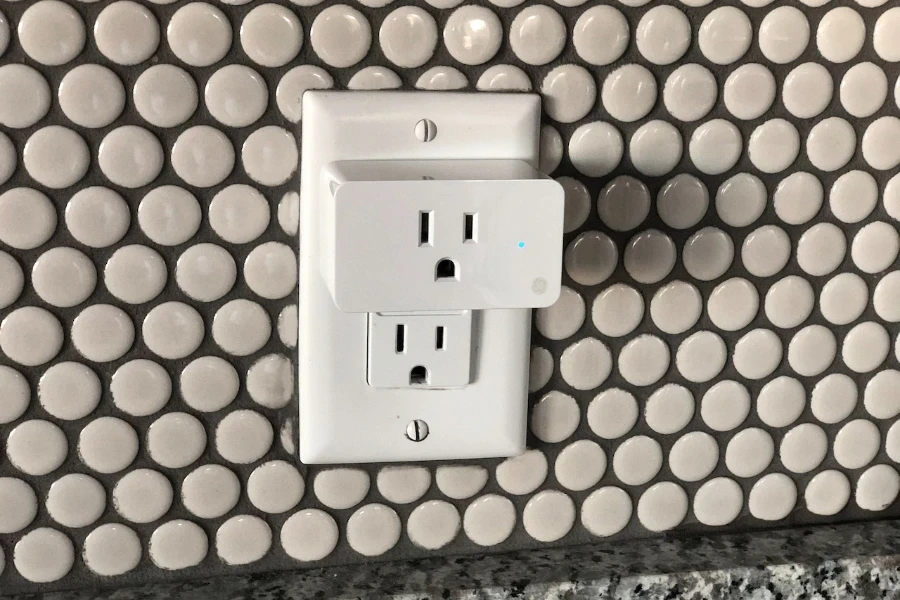
Smart plugs play a vital role in home automation by adding intelligence and control to traditional appliances and devices that might not be inherently “smart.” They act as intermediaries, enabling automation and management of these devices by their power supply.
Here is the role smart plugs can play in home automation, particularly for those working within a tight budget:
- Remote control: Smart plugs allow you to turn devices on or off remotely using a smartphone app, regardless of location. This is particularly useful for devices that don’t have built-in smart capabilities.
- Scheduling: You can schedule when a connected device should be turned on or off. For example, you can schedule your coffee maker to start brewing every morning or turn off devices when they are not needed to save energy.
- Voice control: Many smart plugs are compatible with voice assistants like Amazon Alexa, Google Assistant, or Apple Siri. This means you can control your devices using voice commands.
- Away Mode: Some smart plugs have an “Away Mode” that simulates your presence by turning lights or other devices on and off at irregular intervals, enhancing home security when you’re not there.
- Integration: Smart plugs can be part of broader smart home setups. For instance, you can link them with motion sensors, allowing lights to turn on automatically when someone enters a room.
- Device monitoring: Some smart plugs offer energy-monitoring features, allowing you to track how much energy a connected device consumes over time.
Smart plugs bridge the gap between traditional devices and modern home automation systems, offering convenience, energy savings, and enhanced control over your household appliances. For those on a budget, smart plugs provide a cost-effective way to bring automation to existing appliances instead of replacing existing devices with smart versions.
Additionally, there are smart power strips that can control more than one device simultaneously for added convenience.
Affordable smart home entertainment
When integrating a home theater system within a home automation setup, there are essential components and considerations to ensure a seamless and enjoyable entertainment experience. Here are the key essentials to focus on:
- Display device: Choose a high-quality display, such as a large-screen TV or a projector with a compatible screen.
- Audio system: Invest in a quality audio setup, such as a soundbar or a multi-channel speaker system. Ensure compatibility with the home automation system and consider audio quality for an immersive experience.
- Media source: A media source is crucial for content playback. This could be a streaming device, a Blu-ray player, or a gaming console.
- Smart hub or controller: Integrate your home theater into your home automation system using a smart hub or a central controller. This enables unified control over all devices through a single interface.
- Smart remote control: Invest in a smart remote control to manage various devices within your home theater setup. Look for a model compatible with your home automation system that can streamline control.
Depending on a customer’s budget, they may need to start with a few essential items while planning for expansion and upgrades. The only elements that are required are a display and audio. With a smart TV, consumers can use existing streaming services like Amazon, Netflix, and Disney Plus or utilize open-source media center software like Plex.
If you keep home automation in mind, consumers can consider expanding their audio setup, upgrading their streaming services, purchasing a smart remote, and upgrading their lighting to create a more immersive home theater setup with more automation.
Choosing a budget-friendly smart TV
When choosing a budget-friendly smart TV with future-proofing and home automation in mind, focus on essential features that ensure compatibility and adaptability. Look for a widely supported smart platform and app ecosystem, along with voice control integration through popular virtual assistants like Amazon Alexa or Google Assistant. Prioritize TVs with smart home hub integration and network connectivity options like Wi-Fi and Ethernet.
Additionally, opt for 4K UHD resolution and basic HDR support to enhance visuals and consider features like multiple HDMI and USB ports and compatibility with streaming devices.
Selecting a TV with these features lays the groundwork for seamless integration into an evolving smart home setup while enjoying quality entertainment.
Why is a sound bar budget-friendly? How to choose the best one
A soundbar is considered budget-friendly for several reasons. First, it significantly improves audio quality over built-in TV speakers at a relatively affordable price point. It eliminates the need for a complex multi-speaker setup, making it a cost-effective option for enhancing your home entertainment experience. Additionally, soundbars often come with built-in amplifiers, reducing the need for additional audio equipment.
When choosing the best budget-friendly soundbar, consider the following factors:
- Audio quality: Look for soundbars with good audio quality, clear dialogue, and balanced sound across various frequencies.
- Connectivity options: Ensure the soundbar has sufficient input options like HDMI, optical, and Bluetooth.
- Subwoofer: Some budget soundbars come with separate subwoofers for enhanced bass. If you’re a fan of deep, rich sound, consider a model with a subwoofer.
- Virtual surround sound: Look for soundbars with virtual surround sound technology to create a more immersive audio experience.
- Smart features: Some soundbars offer built-in streaming apps or compatibility with virtual assistants for added functionality.
- Future expansion: Consider if the soundbar can be expanded with additional speakers when the budget allows.
How voice-controlled entertainment devices enhance user experience
Voice-controlled entertainment devices significantly enhance the user experience by providing hands-free control and seamless integration with various entertainment systems. Here’s how they elevate the way we interact with entertainment technology:
- Convenience: Voice control eliminates the need to search for remotes or navigate through menus manually. Users can give voice commands to initiate actions, making the entertainment experience effortless. Additionally, users can control devices even when their hands are occupied, which is particularly useful while cooking, exercising, or relaxing on the couch.
- Natural interaction: Interacting with voice devices feels more natural and intuitive than navigating complex menus or remote buttons.
- Multi-device control: Voice assistants like Amazon Alexa and Google Assistant can control multiple devices simultaneously. Users can adjust lights, thermostats, and play content on different devices without switching between remotes or apps.
- Content accessibility: Users can request specific content without knowing which streaming service or platform it’s available on. Voice-controlled devices can search across services and find the desired content.
- Search and discovery: Users can ask for recommendations or search for content using natural language. Voice assistants can provide personalized suggestions based on viewing habits.
- Accessibility: Voice control makes entertainment more accessible for people with mobility or vision impairments, providing an inclusive experience.
- Faster navigation: Voice commands allow users to navigate quickly through menus, adjust settings, and switch between content without manual input.
- Reduced clutter: With voice control, users can declutter their living space by reducing the need for multiple remote controls.
Voice-controlled entertainment devices revolutionize how users interact with their entertainment systems, creating a seamless and enjoyable experience that enhances convenience, accessibility, and overall entertainment enjoyment.
Future-proofing your affordable smart home
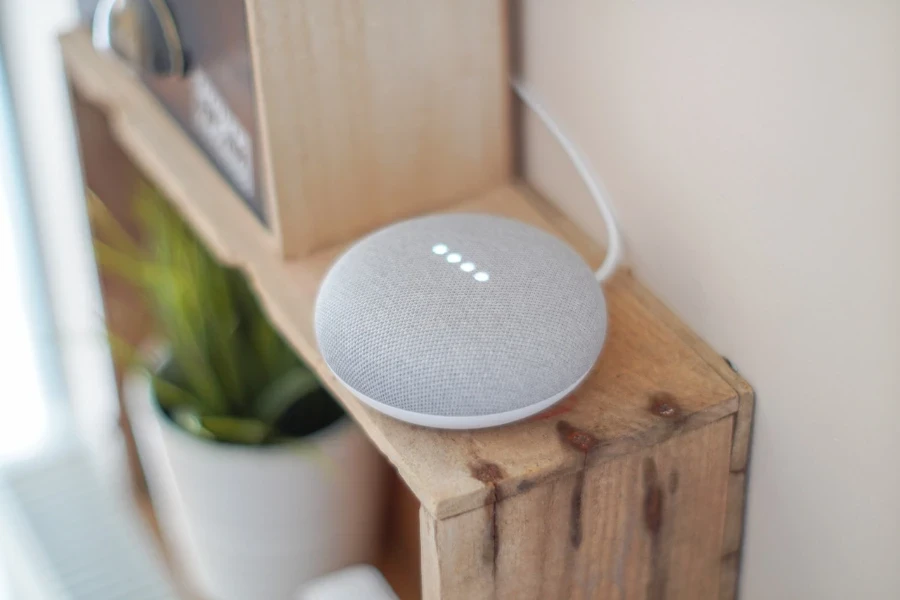
As providers of cutting-edge home automation devices, your mission is to ensure that your offerings remain relevant and adaptable as technology advances. Here’s some advice to pass on to your customers:
- Select versatile hub: Emphasize the importance of versatility. Hubs supporting diverse protocols enable seamless communication, allowing gradual expansion of a smart home without hub changes.
- Prioritize interoperability: Encourage consumers to prioritize compatibility and integration. This approach empowers them to curate a tailored smart home experience by incorporating devices from different manufacturers to save money.
- Start with essentials: Steer consumers towards essential devices that deliver maximum value.
- Embrace scalability: Encourage gradual growth from a few devices.
- Leverage ecosystem synergy: Encourage your customers to align with ecosystems that enable seamless expansion.
- Champion updates: Highlight the significance of devices that receive consistent firmware updates for lasting security and value.
Conclusion
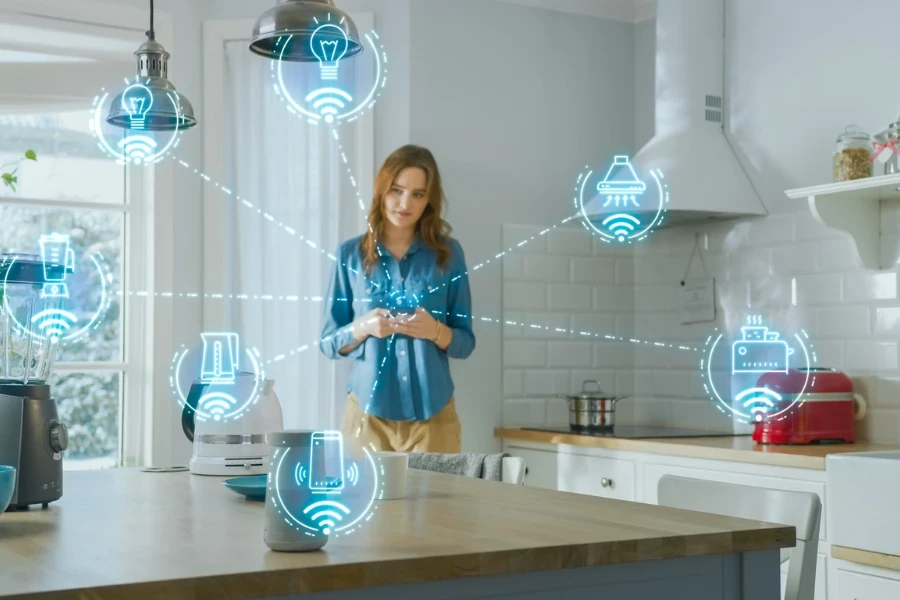
The world of affordable smart home automation offers an exciting opportunity for businesses to tap into a thriving market while catering to budget-conscious consumers. By understanding the needs and aspirations of consumers, businesses can provide innovative solutions that enhance convenience, energy efficiency, and security — all without breaking the bank.
From smart lighting and thermostats to security cameras and entertainment systems, a range of cost-effective options can bring the benefits of smart living to a wider audience.



